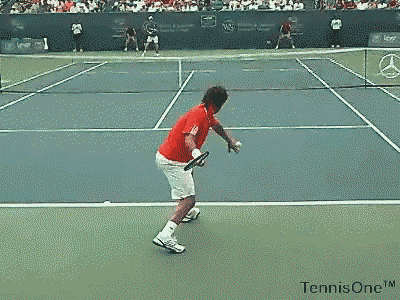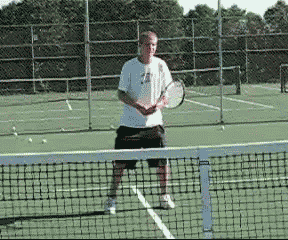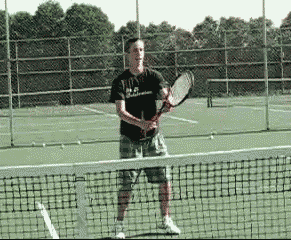|
TennisOne Lessons Baseline Instincts that Hurt You at Net Lawrence Tabak With the current emphasis in the pro game on baseline play and the diminished interest in doubles, it’s no wonder that most players devote most of their practice time to groundstrokes. One of the negative results is the development of deeply ingrained baseline instincts that actually end up hurting your play at net. Here are four examples:
Stroke zone In typical baseline stroke, there is almost always time to get into position to hit the ball within a comfort or strike zone. If a ball is struck directly at a player, it’s a simple step or two to get into position to hit a comfortable forehand or backhand. Net play is different. You don’t have time to move to the right or left when a ball is hit with pace. Still, you will see inexperienced players, and even players of some skill who don’t volley much, let the baseline instinct take over at net. Players will attempt to move around the ball, tipping off balance or jumping and falling to the side. Not only does this result in errors and weak shots, but in a loss of position should the next shot come back. Experienced net players do something entirely different: they hold their ground, keep their stance upright and balanced, and move the racquet into what would normally be considered uncomfortable positions. This is particularly daunting for two-handed players, since most balls struck directly at the body have to be returned with a one-handed backhand. Keeping the racquet square to the net when the ball is at a right-hander’s right hip and still hitting an offensive volley is a skill that most players need to spend considerable time learning.
Court position Court geometry dictates that a baseliner should stay on the opposite side of the center mark after hitting a sharp crosscourt shot. At the net, the positioning is just the opposite, and the volleyer needs to shift position towards the corner of the court where the ball has landed. Players who have not spent a great deal of time at net will not instinctually shift position, and often fail to calibrate the extent of the shift even if they get the direction correct. You can find your ideal position by stopping action and drawing lines from the baseliner’s point of contact to a spot deep down the line and sharp crosscourt. The volleyer should be close to the midpoint of these two lines. Stroke mechanics
Players have been drilled since the game began to “take the racquet back.” But up at net this will often result in trouble. Instead, players need to be drilled on keeping the racquet in front of the body. Another aspect of baseline training is hitting low to high. This again is not the norm on volleys. Skilled volleyers usually hit from high to low, imparting underspin on their volleys. This again can be especially difficult for two-handers and players with Western forehands. Learning volley skills after groundstroke patterns have been deeply established can be as difficult as trying to learn an accent-less foreign language as an adult. Players who have learned volleys as part of their games from the beginning will have a decided advantage in learning advanced volley skills. Grips Every tennis teacher and coach has faced the daunting task of trying to help a player with extreme grips learn practical volleying grips. Volleying forehands with a continental grip is as strange for a player with an extreme Western as it is for a player with conventional grips to hit groundstrokes with an extreme Western grip. In the video (at the top of the page), note how the two-hander demonstrates solid volleys, until balls are struck directly at her body. These situations require letting go with the non-dominant hand and hitting a one-handed volley. The one-handed volleyer shown demonstrates a much higher level of comfort with the same shot. Here again, players who have grown up with a variety of grips and an understanding of volleying will find this all much less traumatic.
Ultimately, players who have competent baseline games without commensurate skills at the net are not only limiting their games and opportunities to win points, but can be exploited by opponents who have the skills to force them into the forecourt. Learning net skills and instincts along with the other skills in tennis is the only practical way to develop truly comfortable, competent all-court players. |


